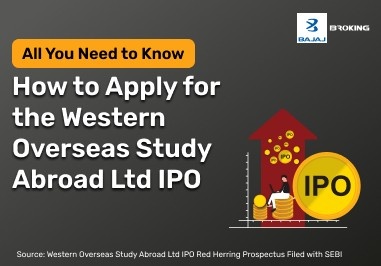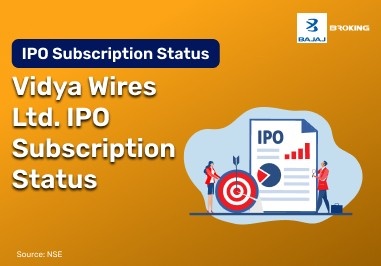One of the most important ideas in investing is intrinsic value. It shows the real or fair value of an asset based on its fundamentals, no matter what the market price is right now. Market prices change based on feelings, news, and conjecture, while intrinsic value looks at the business's performance, future cash flows, and risks that come with it.
In other words, it's the price that a smart investor would be willing to pay for an investment after looking at its risk-return profile. Investors can avoid paying too much for assets that are too expensive by knowing what intrinsic value is. Instead, they should focus on the chances that are undervalued in the market.
How Intrinsic Value Works?
The idea of intrinsic value is based on the idea that every asset has a true value that may be found via examination. This involves looking at the company's fundamentals, such as its earnings, growth potential, and risk considerations, when it comes to stocks. The stock's market price may be very different from its actual worth. If the market price is lower than the stock's intrinsic worth, it is said to be undervalued and may be a good time to buy. If the price is higher, the stock can be inflated, so be careful. This is how investors differentiate noise from reality and make decisions based on long-term value instead of short-term volatility.
Formula For Intrinsic Value
The discounted cash flow (DCF) model is the most common way to figure out intrinsic value. The formula looks like net present value (NPV) and is written as follows:
NPV = Σ [CFi / (1 + r)^n]
Where:
NPV stands for Net Present Value.
CFi = The net cash flow for the ith period
r = the rate at which money is discounted (typically the Weighted Average Cost of Capital)
n = How many times
This strategy takes the predicted future cash flows of an investment and brings them back to their present value. This gives investors an idea of how much the investment is really worth.
Analysing Intrinsic Value Of Stock Options
Investors do fundamental analysis to figure out the underlying worth of an asset. This study looks at both qualitative and quantitative aspects.
Qualitative aspects include the company's business model, governance, competitive position, and market conditions.
Quantitative aspects include cash flow statistics, financial statements, and profitability ratios.
Investors can tell if an item is overvalued, undervalued, or reasonably priced by comparing its intrinsic value to the current market price.
Adjusting for Risk in Intrinsic Value Options Assessment
Valuation is incomplete without factoring in risk. Two common approaches to risk adjustment are:
Discount Rate method
- Uses the weighted average cost of capital (WACC).
- Includes a risk-free rate (like government bond yields) plus an equity risk premium based on stock volatility.
- More volatile stocks require higher discount rates, reducing the intrinsic value.
Certainty factor method
- Assigns probabilities to cash flows.
- Government bonds may get a 100% certainty, while high-growth companies may get lower certainty factors.
- This adjusts the present value of cash flows according to perceived risk.
Both methods highlight that a higher risk reduces the intrinsic value of future earnings.
Challenges in Intrinsic Value Assessment
Finding intrinsic value is hard, even though it is powerful:
Predictions are based on ideas about how much profit, growth, and discount rates will happen in the future.
Valuation can fluctuate a lot with little adjustments to inputs like beta, risk premium, or growth rate.
Different investors may come up with different values for the same company because they have different ideas about what is true.
Because we don't know what will happen in the future, we can't find one "correct" intrinsic value.
Even with these problems, intrinsic value is still a key part of value investing.
Valuation Methods
Three basic ways that professionals figure out intrinsic value are:
Professionals often use three main methods to estimate intrinsic value:
Comparable Company Analysis (Trading Multiples)
- Compares valuation ratios like P/E or EV/EBITDA with peer companies.
- Example: If Company A trades at a P/E of 10 and Company B earns ₹2 per share, Company B’s value may be estimated at ₹20 per share (if comparable).
Precedent Transactions
- Looks at valuations of similar companies that were recently acquired or sold.
- Serves as a benchmark for the company under analysis.
Discounted Cash Flow (DCF) Analysis
- The most popular method for intrinsic value calculation.
- Involves forecasting a company’s future cash flows and discounting them back using WACC.
- Provides a detailed, long-term view of the company’s fair worth.
Pros And Cons of Intrinsic Value Options
Pros
- Offers a reliable framework for understanding the worth of investments.
- Helps investors spot undervalued opportunities in the market.
- Useful in option trading to determine the profit already embedded in a contract.
Cons
- Highly sensitive to assumptions, making outcomes subjective.
- Requires detailed knowledge of finance, accounting, and market conditions.
- For options, intrinsic value alone does not capture time value or volatility.
Exploring the DCF Method with an Example
Let’s understand the DCF method with a simple example:
- Expected annual cash flow: ₹100 for the next 5 years.
- Discount rate: 10%
- Terminal growth rate: 5%
Step 1: Calculate present value of first-year cash flow PV = CF / (1 + r)^n = 100 / (1 + 10%)^1 = ₹91
Step 2: Calculate terminal value Terminal Value = [CF × (1 + g)] / (r – g) = [100 × (1 + 5%)] / (10% – 5%) = ₹2,100
Step 3: Discount terminal value back to present This ensures that today’s value of all future cash flows plus the terminal value gives the stock’s intrinsic value.
Such examples illustrate how analysts determine whether a stock is worth buying.
Conclusion
Understanding what is intrinsic value is critical for investors aiming to build long-term wealth. It helps separate short-term noise from the true worth of assets, guiding investors toward undervalued opportunities. While methods like DCF, comparable analysis, and precedent transactions each have limitations, they provide structured ways to estimate value.
Despite challenges and subjectivity, intrinsic value remains one of the most reliable tools in financial analysis. By applying it consistently, investors can avoid speculation, make rational decisions, and ensure they pay a fair price for their investments.














